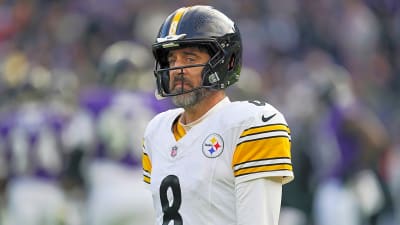
The Pittsburgh Pirates closed the book on their 2025 season over three weeks ago, the final out at PNC Park on September 21st ushering in yet another quiet, premature autumn. It was not a fairytale ending by any means, as the team experienced their tenth consecutive season without making the playoffs, a full decade of disappointment that has tested the faith of even the most loyal fanbase.
The 2025 campaign, once buoyed by preseason hopes of a young core's maturation and a potential breakout, ultimately succumbed to a familiar pattern of offensive inconsistency and a lack of run production in key moments.
Promising stretches of competitive baseball were inevitably undercut by prolonged losing skids, leaving the club to once again play the role of spoiler in the National League Central while three other teams in the division (Milwaukee, Chicago and Cincinnati) made the postseason.
Yet, within this broader narrative of organizational stagnation, individual stories of performance and perseverance on the Pirates demand a closer look, as they are the components from which a winning future must be constructed. It may be hard to believe right now, but the building blocks are there for the Pirates to be a playoff team in 2026. However, if the front office chooses to again be conservative this off-season, another last place finish is likely.
This series begins that essential deep dive by turning the spotlight onto Bryan Reynolds, the franchise cornerstone and one of the few constants in a sea of variables. Analyzing his disappointing 2025 campaign provides an essential lens to understand the team's current strengths, its lingering gaps, and the potential trajectory of its painstakingly long rebuild.
Offenseive Struggles
Reynolds was the key piece in the 2018 deal that sent Andrew McCutchen to San Francisco at the trade deadline. The Baltimore native made his MLB debut a year later for the Pirates, eventually establishing himself as a vital cog in the Pittsburgh lineup. Reynolds, a switch-hitter, signed an eight-year, $106.75 million contract extension on April 25, 2023.
Reynolds was an All-Star in 2021 and 2024 based off the strength of his bat. From 2021 to 2024, Reynolds hit at least 20 home runs and had a WRC+ of at least 110 in each season. His 2021 season was his breakout and the overall best of his career, as he finished with an impressive slash line of .302/.390/.522 with 24 home runs and 90 runs batted in.
It was a clear step back at the plate this season, however. He hit 16 home runs, the lowest since his rookie season, and struck out a career-high 173 times. His overall slash line for 2025 was .245/.318/.404, all categories taking a significant dip from last year. Reynolds' strikeout percentage climbed to 26.5%, his highest since the shortened 2020 season. For the first time since that season, Reynolds' wRC+ was below 100 (99). Essentially, this was the first full season of Reynold's career that he has not been an above average hitter in Major League Baseball.
Reynolds did lead all Pirates hitters in doubles with 38. However, it seemed like many of his barrels that were previously leaving the park, became doubles this season. Ironically, StatCast data shows that Reynolds actually was barreling up the ball (10.1%) right on pace with his career average of 9.4%. His hard-hit percentage was 46%, which was actually higher than his rate last season (45.4%), and his average exit velocity (91.2 mph) was a career high.
The culprit for why last year's home runs turned into doubles this year? Reynolds' average launch angle on batted balls was 7.3 degrees - his career average is 10.4 degrees. It seems as if Reynolds wasn't quite getting the lift on the ball that he needed to get it over outfield walls. And that might be exactly why we saw Reynolds' power dip. Flat out bad luck may have contributed as well, considering how similar some of Reynolds' peripheral numbers were last year to his career.
The impact of this downtick in power production would be diminished if Reynolds were something like the five or sixth hitter in the lineup. But he consistently bats at the top of the lineup, usually in the third spot. It becomes harder to justify that place in the lineup if Reynolds is carrying an OBP below .320 and hits less than 20 home runs, especially for a Pirates team that is already starving for run production.
Bryan Reynolds adds another ☑️ pic.twitter.com/U5aqvgaTn2
— Pittsburgh Pirates (@Pirates) August 24, 2025
Reynolds did have a better second half of the season, and an especially torrid month of August (.295/.383/.543 with four home runs and 17 RBI).
He was slightly better as a left-handed hitter (.257/.335/.439) than when he batted righty (.241/.312/.390), and he also provided more power from that side of the plate (10 HR, 29 2B as lefty; 6 HR, 9 2B as righty).
Reynolds was about an average baserunner this season. He only stole three bases, a career low, but still provided slightly-above average value on the basepaths according to Statcast. He provided the Pirates two runs by taking extra bases, a career high. Reynold's average sprint speed was 28.1 mph, right in line with his career average. It's safe to say that Reynolds is an average baserunner with above-average speed.
Despite peripheral stats suggesting he was hitting the ball as hard as ever, a critical drop in his launch angle transformed what should have been home runs into a team-leading pile of doubles, sapping his power and rendering him a below-average hitter for the first time in a full season. For a player cemented in the heart of the lineup on a team desperate for offense, his decline in production is not just a statistical anomaly but a significant liability, raising serious questions about his ability to anchor the Pirates' lineup moving forward.
Defensive Doubts
Reynolds played games at center and left field as recently as 2023, but now seems firmly entrenched as the Pirates' right fielder. Reynolds, 30, also played more games at designated hitter (35) than in any season.
According to Statcast, he provided well below average range in the outfield. His arm value was also below average, as Reynolds only had four outfield assists on the season. Reynolds has put in significant work over the last few seasons to improve his arm strength (87 mph average throw), but can struggle to make accurate throws from right field.
Reynolds value has always been in his bat. He's an average defender at best, which became more glaring this season with his decreased offensive production.
What's Next for Bryan Reynolds?
Reynolds will begin the fourth season of his contract extension in 2026, carrying a base salary of $14,250,000 on the Pirates' payroll. It's a completely fair price for a player that has boasted five seasons of at least 2 WAR. It also happens to be the largest contract for a Pittsburgh hitter, which obviously says more about the Pirates' front office than it does Reynolds. That means increased pressure and higher standards for a player that might only bat sixth or seventh in the Los Angeles Dodgers lineup.
If the Pirates don't add an impact bat this off-season, Reynolds will again be expected to be a major contributor in the lineup. Is that fair for a guy who has never 30 home runs or drove in 100 runs? Probably not, yet that's the reality of the situation. There's a strong chance that Reynolds' power numbers will bounce back next season. But even if it does, the Pirates will need contributions elsewhere on the diamond if they want to avoid finishing last in team home runs again.
Ultimately, Bryan Reynolds enters 2026 as a paradox: a fairly-paid player by market standards who is overmatched by the burden of being the Pirates' franchise hitter. His contract, the largest for a hitter in club history, is less a testament to his elite status and more a glaring indictment of the organization's poverty of ambition. While a power rebound is statistically probable, it will be inconsequential unless the front office stops treating him as a final destination and starts building a lineup where a player of his caliber is a complementary piece, not the lone cornerstone.
More must-reads:
- NFL rookie QB starter rankings: A surprise No. 1 quietly emerges
- Buffalo Sabres' GM change isn't about rebuilding
- The 'AL and NL MVPs since 2000' quiz
Breaking News
Trending News
Customize Your Newsletter
 +
+
Get the latest news and rumors, customized to your favorite sports and teams. Emailed daily. Always free!








